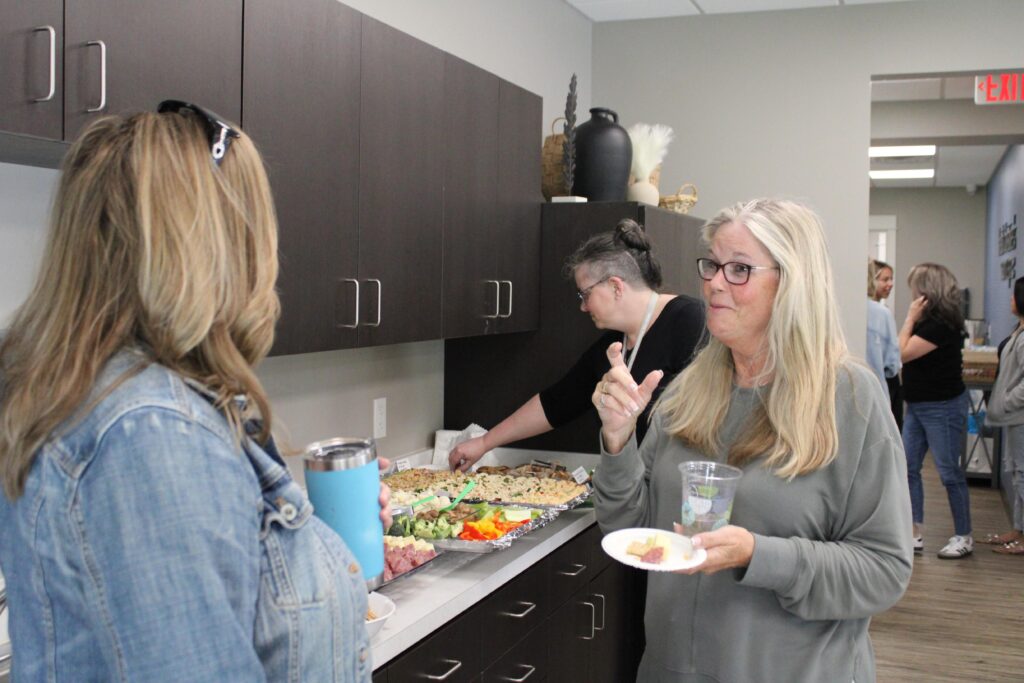Saying Thanks to Our Interpreters
For D&HHS executive director Deb Atwood there is no question that ASL interpreters are an important part of the agency.
“This agency has been doing interpreter referral since our inception,” she said. “Advocacy and the other programs that are important to our communities are possible because of it. It allows our agency to exist and carry out our mission on a day-to-day basis.”
In mid-May almost 20 interpreters took advantage of a D&HHS Interpreter Appreciation Day at a local spa where the agency provided complimentary manicures, pedicures, facials, scalp massages and hair stylings.
“We wanted to express our appreciation with a larger event,” said Erica Chapin, community and partnerships manager for D&HHS. “Everyone loved their services and especially enjoyed the time to be able to see one another and share food and drink.”
Haley Shorkey has been a certified ASL interpreter for two years and was pleasantly surprised to get an invite to Interpreter Appreciation Day.
“It was a really nice day,” she said. “Being pampered while also getting to see staff and other interpreters and socialize and snack together was really fun. It was so relaxing, and I did feel very appreciated.”
Marilyn Corlett obtained her first ASL certification in 1977 and has worked with D&HHS for a decade now. She said Interpreter Appreciation Day was just one more example of how D&HHS goes the extra mile.
“Manicures and pedicures, facial massages, the works,” she said with a smile. “We were treated with drinks and refreshments. We had the opportunity to meet new and old colleagues. What a gift.”
And Lisa Cook, a certified ASL interpreter for almost two decades, noted that often interpreting is an isolating field and can be physically and mentally exhausting. The Interpreter Appreciation day, she said, “gives us a chance to connect with each other, relax and get pampered. I left feeling refreshed and appreciated.”


Chapin said that while the services were the centerpiece of the day, D&HHS staff also know the importance of creating community for ASL interpreters.
“Many interpreters don’t get the opportunity to see one another regularly,” she said. “Having time to relax and catch up seemed to be what everyone enjoyed most. The same goes for our staff. There were some interpreters meeting staff for the first time in person after communicating over the phone for years. So creating community was a really important part of the event.”
